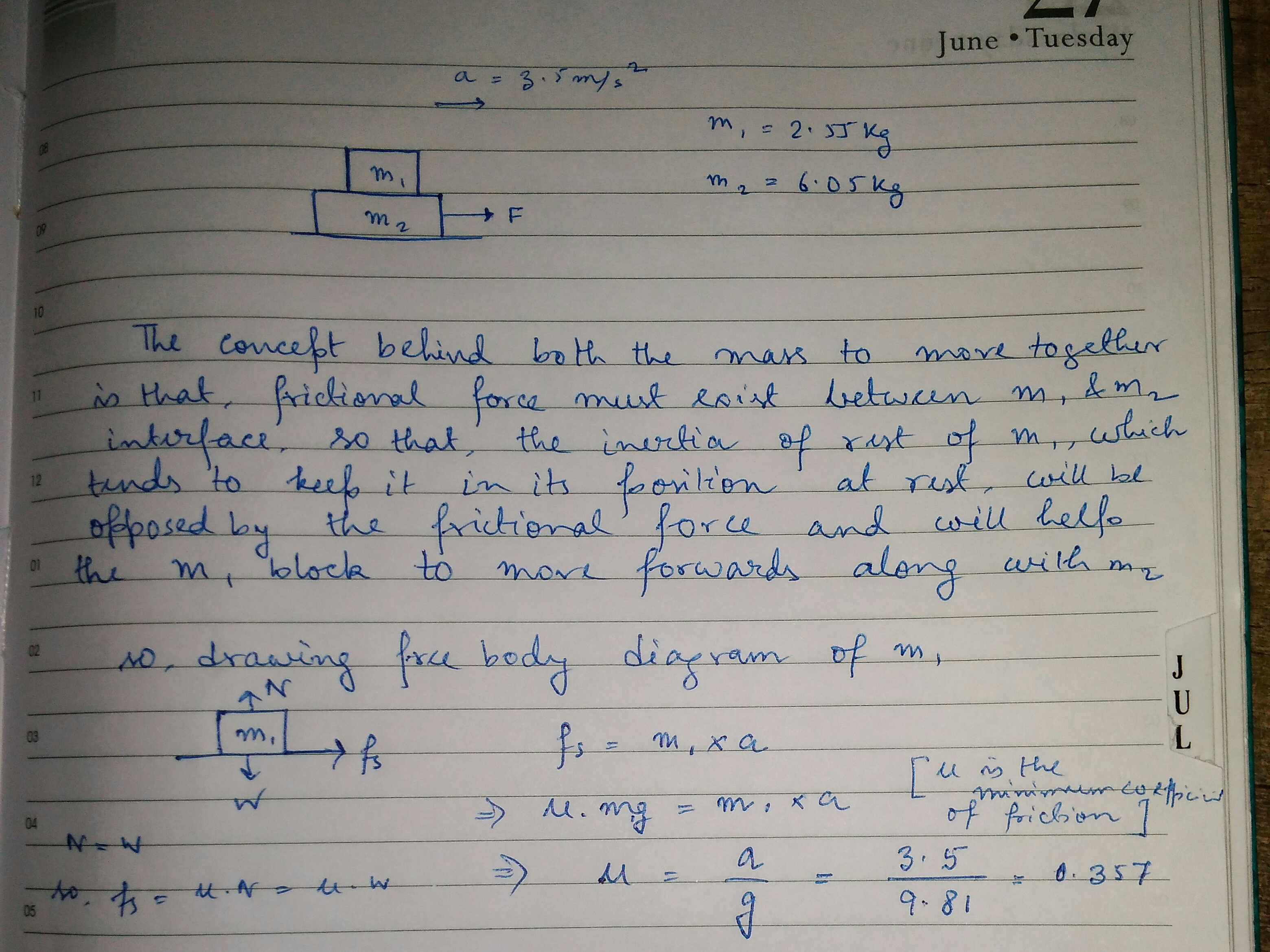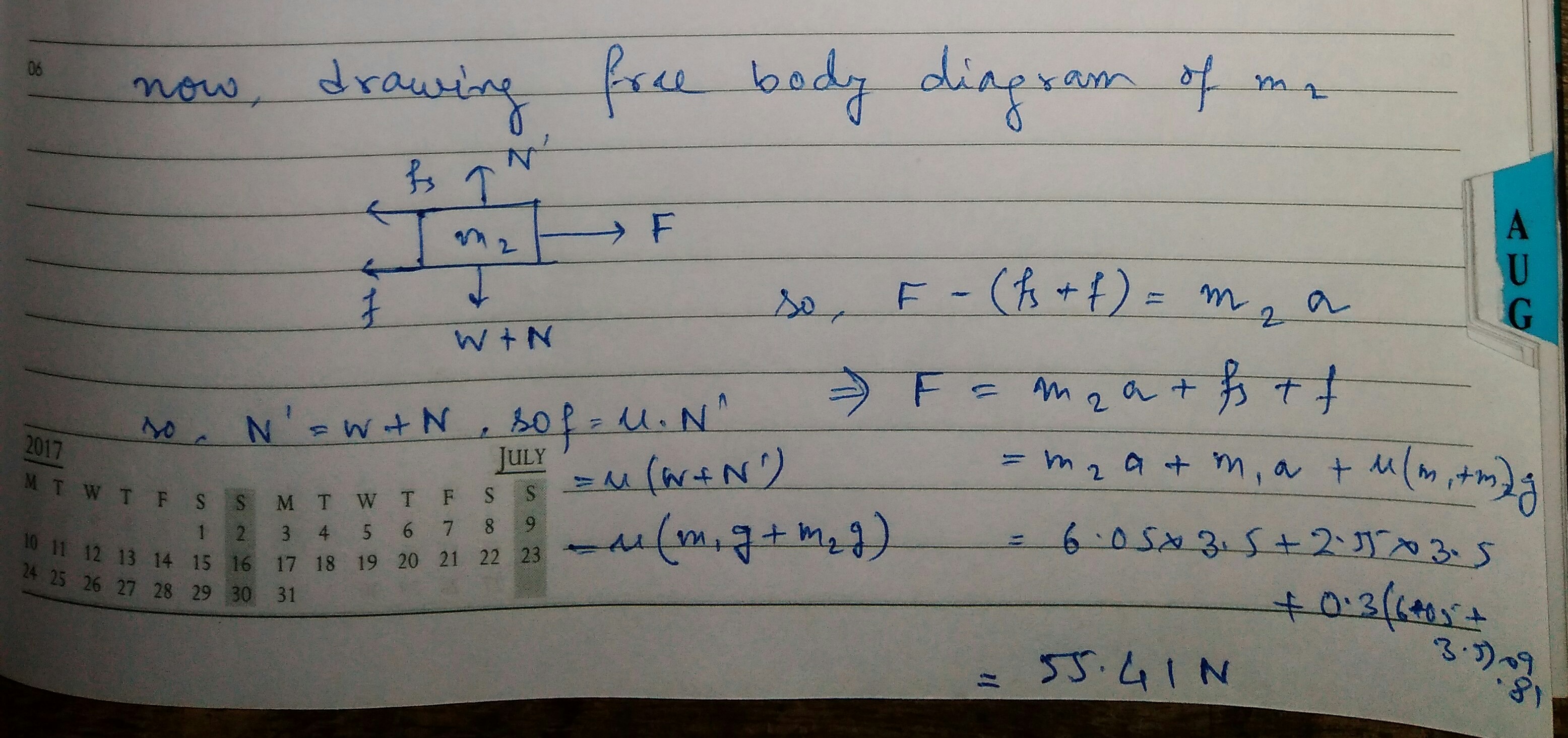How to find the static friction between stacked blocks so that the top block does not slip when the bottom block is accelerated?
a) A 2.55 kg block is placed on top of a 6.05 kg block. The coefficient of friction between the 6.05 kg block and the surface is 0.3. A horizontal force F is applied to the 6.05 kg block. Calculate the magnitude of the force necessary to pull both blocks to the right with an acceleration of 3.5 m/s/s.
This equals #(m_t*a)+ F_f or 55.4 N#
b) Find the minimum coefficient of static friction between the blocks such that the 2.55 kg block does not slip under an acceleration of 3.5 m/s/s.
I thought this would just be
#(F_(n 2.55))(mu_s)=F_f#
#(25N)(mu_s) = 55.4N#
#mu_s=2.22#
But this is incorrect. So how would I go about finding this value?
a) A 2.55 kg block is placed on top of a 6.05 kg block. The coefficient of friction between the 6.05 kg block and the surface is 0.3. A horizontal force F is applied to the 6.05 kg block. Calculate the magnitude of the force necessary to pull both blocks to the right with an acceleration of 3.5 m/s/s.
This equals
b) Find the minimum coefficient of static friction between the blocks such that the 2.55 kg block does not slip under an acceleration of 3.5 m/s/s.
I thought this would just be
But this is incorrect. So how would I go about finding this value?
1 Answer
Please see below
Explanation:


The problem you faced was because you thought the force
But that is not true,the smaller block is moving forward due to the frictional force acting at the smaller block and larger block interface.
Now,you may ask,how is it possible that frictional force is helping a body to move????? Whereas we know it opposes relative motion!!!
Well here the smaller block due to its inertia of rest,tries to remain at rest at its original position,so when you accelerate the larger block,the smaller block tries to move backwards w.r.t the larger block,but this the frictional force,which opposes its relative backward motion and tries to carry the smaller block along with the larger block,so,as soon as the frictional force acting at the larger and smaller block interface fails to meet the force

